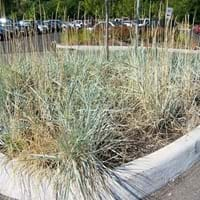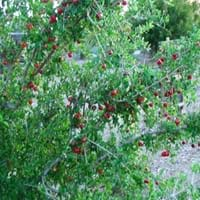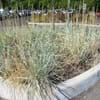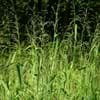Life Span
Perennial
Annual and Perennial
Origin
Europe, Northern Europe, Western Europe, Asia, Central Asia, Western Asia
Central America, South America
Types
Blue Lyme Grass
Not Available
Habitat
Clay soil areas, Loamy soils, Sandy areas, sandy seeps, Well Drained
Dry areas, Well Drained, Woodlands
USDA Hardiness Zone
4-10
9-11
AHS Heat Zone
10 - 1
Not Available
Sunset Zone
A2, A3, 1a, 1b, 2a, 2b, 3a, 3b, 4, 5, 6, 7, 8, 9, 14, 15, 16, 17, 18, 19, 20, 21, 22, 23, 24
Not Available
Habit
Spreading
Thicket/Colonizing
Flower Color
Creamy Yellow
Pink
Flower Color Modifier
Bicolor
Bicolor
Fruit Color
Not Available
Red
Leaf Color in Spring
Blue Green, Steel Blue
Light Green, Gray Green
Leaf Color in Summer
Light Green
Light Green, Gray Green
Leaf Color in Fall
Light Yellow, Pink, Steel Blue
Light Green, Gray Green
Leaf Color in Winter
Tan
Green
Leaf Shape
Grass like
Oval
Plant Season
Summer, Fall
Spring, Summer
Sunlight
Full Sun, Partial Sun
Full Sun
Type of Soil
Clay, Loam, Sand
Loam, Sand
The pH of Soil
Acidic, Neutral, Alkaline
Alkaline
Soil Drainage
Well drained
Well drained
Bloom Time
Summer, Late Summer
Spring, Summer
Tolerances
Pollution, Drought, Salt
Drought
Where to Plant?
Container, Ground, Pot
Container, Ground, Pot
How to Plant?
Root Division, Rooted stem cutting, Seedlings
Cuttings, Seedlings
Plant Maintenance
Medium
Medium
Watering Requirements
Average Water Needs, occasional watering once established
Average Water Needs, Do Not over Water, Requires regular watering
In Summer
Lots of watering
Lots of watering
In Spring
Moderate
Moderate
In Winter
Average Water
Average Water
Soil pH
Acidic, Neutral, Alkaline
Alkaline
Soil Type
Clay, Loam, Sand
Dry, Sandy
Soil Drainage Capacity
Well drained
Well drained
Sun Exposure
Full Sun, Partial Sun
Full Sun
Pruning
No pruning needed in the early stages, Prune grass to maintain level, Remove damaged leaves, Remove dead branches, Remove dead leaves
In Early Autumn, Prune in winter, Remove branches, Remove damaged leaves, Remove dead branches, Remove dead leaves, Remove dead or diseased plant parts
Fertilizers
All-Purpose Liquid Fertilizer, fertilize in spring
Complete balanced fertilizer, iron-rich fertilizer
Pests and Diseases
Red blotch
Aphids, Red blotch, Whiteflies
Plant Tolerance
Drought, Pollution, Salt
Wind
Flowers
Insignificant
Yes
Flower Petal Number
Single
Single
Foliage Texture
Coarse
Medium
Foliage Sheen
Matte
Glossy
Attracts
Butterflies
Bees, Birds, Butterflies, pollinators
Aesthetic Uses
Ground Cover, Landscape Designing
Showy Purposes
Beauty Benefits
Not Available
Good for skin
Edible Uses
Insignificant
Yes
Environmental Uses
Air purification, soil erosion prevension on hill slopes, soil stabilisation
Air purification, Food for birds, Nesting sites for birds, Windbreak
Medicinal Uses
Not Available
Antioxidants, Arthritis, Diarrhea, Dysentry, Fertility, Fever, Inflammation, Kidney problems, scurvy, Urinary tract problems, Vitamin C
Part of Plant Used
Stem
Flowers, Fruits, Leaves, Root
Other Uses
Used as Ornamental plant
Used As Food, Used as Ornamental plant, Used for making hedge
Used As Indoor Plant
No
Yes
Used As Outdoor Plant
Yes
Yes
Garden Design
Mixed Border
Rock Garden / Wall, Wildflower
Botanical Name
LEYMUS arenarius 'Blue Dune'
Malpighia emarginata
Common Name
Blue Dune Lyme Grass, Sand Ryegrass
Barbados cherry, West Indian cherry and wild crepe myrtle
In Hindi
Blue Dune Lyme Grass
Acerola Tree
In German
Blau Dune Lyme Grass
Acerola Baum
In French
Bleu Dune Lyme Herbe
Acerola Arbre
In Spanish
Azul Duna hierba de Lyme
Árbol de acerola
In Greek
Μπλε Dune Lyme Grass
Acerola Δέντρο
In Portuguese
Azul Dune Lyme grama
Árvore acerola
In Polish
Niebieska Trawa Dune z Lyme
Acerola Drzewo
In Latin
Blue Dune Lyme Grass
Acerola ligno
Phylum
Magnoliophyta
Not Available
Class
Liliopsida
Not Available
Order
Cyperales
Malpighiales
Family
Poaceae
Malpighiaceae
Clade
Angiosperms, Commelinids, Monocots
Angiosperms, Eudicots, Rosids
Tribe
Triticeae
Not Available
Subfamily
Pooideae
Not Available, Paperveroideae
Number of Species
Not Available
Not Available
Season and Care of Blue Dune Lyme Grass and Acerola
Season and care of Blue Dune Lyme Grass and Acerola is important to know. While considering everything about Blue Dune Lyme Grass and Acerola Care, growing season is an essential factor. Blue Dune Lyme Grass season is Summer and Fall and Acerola season is Summer and Fall. The type of soil for Blue Dune Lyme Grass is Clay, Loam, Sand and for Acerola is Loam, Sand while the PH of soil for Blue Dune Lyme Grass is Acidic, Neutral, Alkaline and for Acerola is Alkaline.
Blue Dune Lyme Grass and Acerola Physical Information
Blue Dune Lyme Grass and Acerola physical information is very important for comparison. Blue Dune Lyme Grass height is 150.00 cm and width 75.00 cm whereas Acerola height is 457.20 cm and width 243.84 cm. The color specification of Blue Dune Lyme Grass and Acerola are as follows:
Blue Dune Lyme Grass flower color: Creamy Yellow
Blue Dune Lyme Grass leaf color: Blue Green and Steel Blue
Acerola flower color: Pink
- Acerola leaf color: Light Green and Gray Green
Care of Blue Dune Lyme Grass and Acerola
Care of Blue Dune Lyme Grass and Acerola include pruning, fertilizers, watering etc. Blue Dune Lyme Grass pruning is done No pruning needed in the early stages, Prune grass to maintain level, Remove damaged leaves, Remove dead branches and Remove dead leaves and Acerola pruning is done In Early Autumn, Prune in winter, Remove branches, Remove damaged leaves, Remove dead branches, Remove dead leaves and Remove dead or diseased plant parts. In summer Blue Dune Lyme Grass needs Lots of watering and in winter, it needs Average Water. Whereas, in summer Acerola needs Lots of watering and in winter, it needs Average Water.





